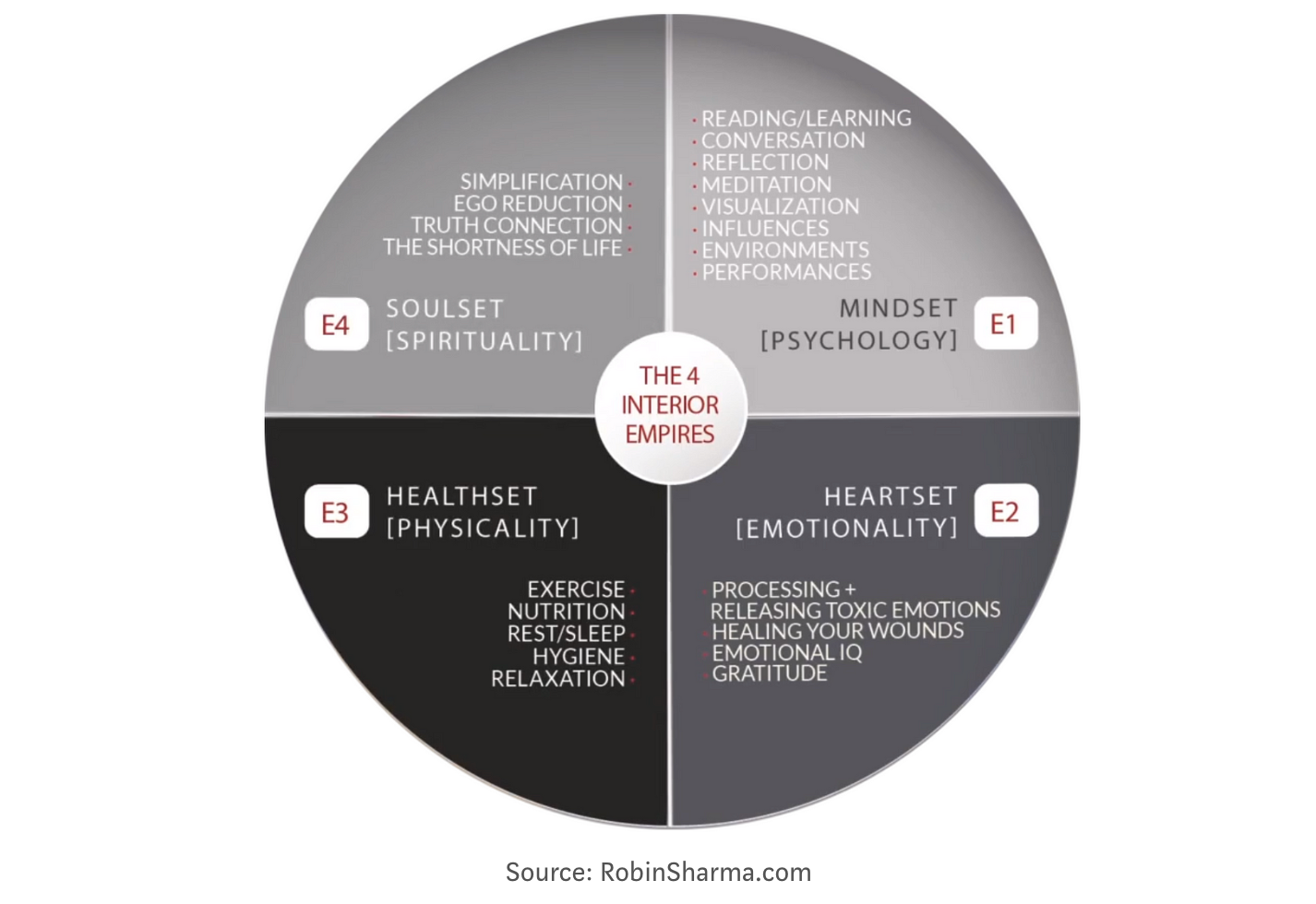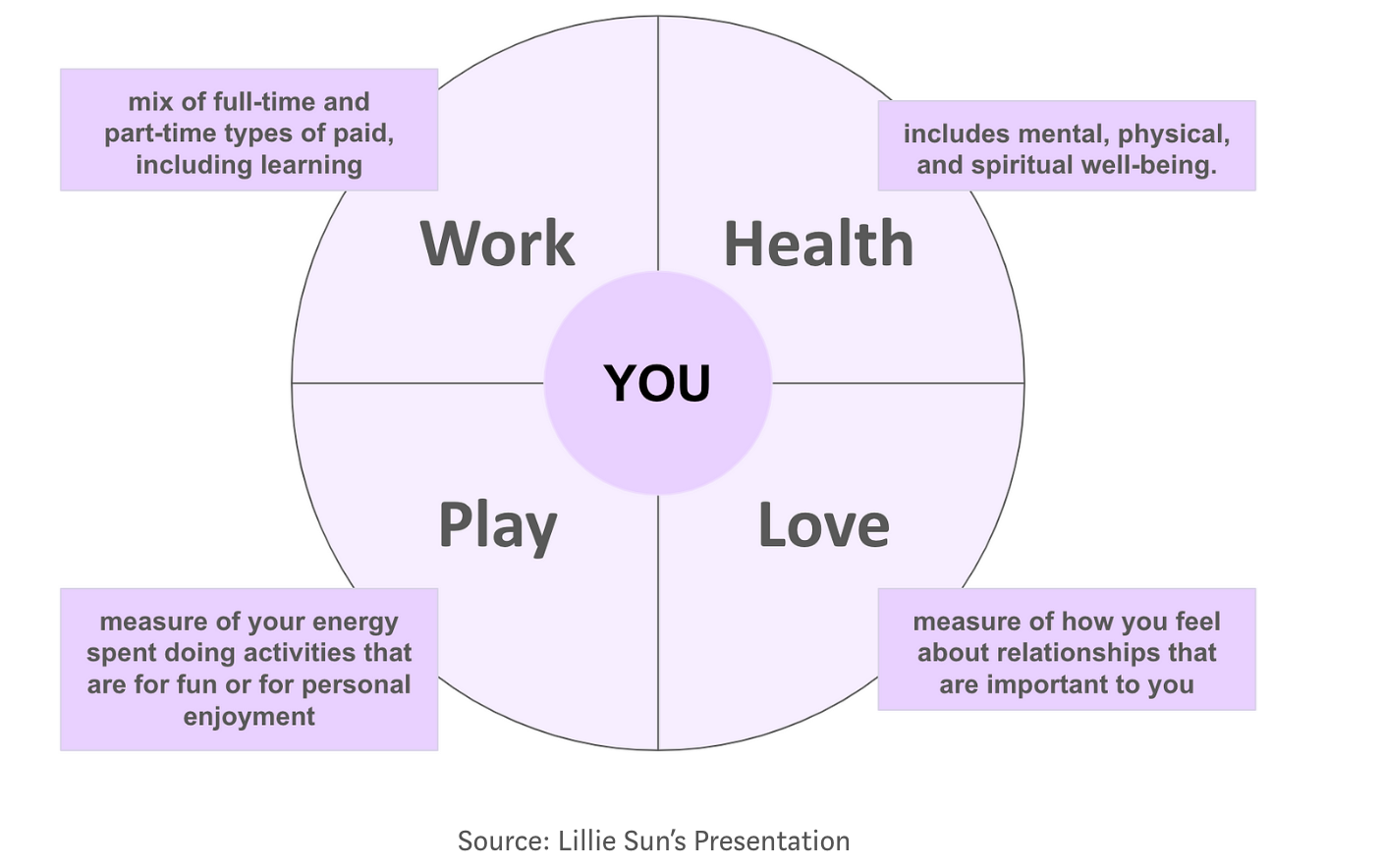How I Self-Introspect

“Your new life is going to cost you your old one. It’s going to cost you your comfort zone and your sense of direction. It’s going to cost you relationships and friends. It’s going to cost you being liked and understood. It doesn’t matter.”
Self-introspection is the first key to accomplishing your goals for 2024. The quote above encapsulates the challenge of shedding the old to embrace the new. A common pitfall is attempting to set goals without delving into the depths of self-awareness. Without a deep understanding of your priorities, habits, triggers, and roadblocks, you risk falling back into familiar patterns, leading to a year-end lamentation of unfulfilled promises and self-doubt. Breaking this cycle necessitates recognizing the gap between your current actions and the person you want to become.
Personally, I kept making new resolutions, only to fail them by the end of the year. Each unmet goal chipped away at my trust and self-esteem, fostering a defeated mindset — change was an insurmountable task. It was easier to just sit down, shrug my shoulders, and say “I can’t change who I am, why bother trying?” However, the truth is far from it. No one is bound to a fixed personality that they somehow inherited when they were born. With the right external conditions and persistent effort, change is not only possible but transformative. This article outlines a clear path to instigating long-lasting change in your life.
I credit a lot of the content to Lillie Sun’s presentation during the “Be Limitless” workshop hosted by GenShe’s founder Avni Barman. Thank you for such an amazing workshop that helped add to my list and this article.
Reflection/Self-introspection is all about being obsessed with knowing yourself. Here are some actionable steps to be able to do that. I hope you have your pen and paper ready for these exercises!
Figure Out the 4 Quadrants of Your Life
As intricate beings, we navigate a myriad of facets that hold significance in our lives. The key to effectively managing our pursuits lies in categorizing and organizing these aspects. By compartmentalizing our goals, we gain the clarity to prioritize certain categories over others, fostering a strategic approach to our endeavors.
In “The 5am Club,” the author delineates four fundamental aspects of life — mindset, healthset, heartset, and soulset. These facets serve as foundational pillars, influencing our overall well-being and success. Similarly, during the workshop, Lillie introduced another perspective, identifying four quadrants that encompass work, health, love, and play. Here are the definitions for each:


As a college student, I resonated with Lillie’s quadrant model the most, appreciating its applicability to my dynamic and multifaceted life. However, whether “The 5am Club’s” or Lillie’s, both essentially encapsulate similar quadrants of life. It is upto you to decide what suits best for your life.
Exercise: Draw four distinct quadrants on a sheet of paper, leaving ample space around each for the next steps. Label these quadrants according to your chosen framework, whether it aligns more with “The 5am Club” or Lillie’s workshop. In each quadrant, briefly jot down priorities and goals relevant to that aspect of your life or any initial thoughts for that quadrant.
Metacognition
Metacognition is the ability to know what you know, know what you don’t know, and know what to do when you don’t know. Personally, the realization of the vast expanse of what I don’t know has often left me feeling overwhelmed. Yet, in moments of challenge, I’ve swiftly navigated the unknown by leveraging my existing knowledge. It’s a common tendency to underestimate what we already know and get entangled in what we don’t. This oversight often leads us to neglect the crucial aspect of considering what actions to take when confronted with the unfamiliar. Action, as I’ve come to understand, is the key to unlocking clarity and progress.
Exercise: For each of the quadrants, describe what you know about yourself in that quadrant, what you don’t know in that quadrant, and what you plan on doing when you face what you don’t know. Here’s an example:

This exercise becomes a roadmap for self-discovery and intentional growth, prompting reflection on personal strengths, areas for improvement, and proactive steps to navigate uncharted territories in our lives.
Become Obsessed with Knowing Yourself
You are your most reliable ally, the one constant in your life’s journey, regardless of the people who enter and exit your story. It’s easy to overlook the need to be kind to ourselves — to treat ourselves like our own best friend. This approach holds great significance for our mental well-being, allowing us to step back from life’s ups and downs and approach situations with a clearer mind.
Similarly, fostering curiosity about ourselves becomes a key ingredient. Regularly asking questions that unravel the layers of who we are helps us discover our untapped potential. It is important to think of ourselves in third person when self-introspecting because this shift in perspective can provide valuable insights and aid in the ongoing journey of self-discovery.
Exercise: Form questions for each of your 4 quadrants. What do you want to know about yourself in the particular quadrant? Here are some questions to get you started. I do suggest forming your own questions because these might be too generic.

Tracking the Right Things
Next, it is important to understand and assess your current habits. A person is only as strong as their habits. Habits are what make us, us. Beyond dictating our day-to-day actions, habits shape our personality, our instincts, and our reactions. However, simply making a chart of good and bad habits is not sufficient. For bad habits you want to get rid of, you need to understand their triggers. For good habits you want to cultivate, you need a plan-of-action for possible roadblocks that may approach you. Your chart should look more like this:

Secondly, it’s vital to monitor the significant influences shaping your life, as they determine the input that inevitably influences our output. Safeguarding our mental and emotional well-being requires filtering out negative influences and consistently exposing ourselves to elements that drive progress. In each quadrant, it’s essential to document the existing inputs and evaluate whether they warrant removal, replacement, or expansion.
For example, in my work quadrant, my previous input was solely my classes. Recognizing the need for more, I expanded it to include podcasts and books to enrich my learning experience.

Exercise: For each quadrant, jot down bad habits + triggers and good habits + roadblocks you might face. Then, jot down what your current inputs for each quadrant and whether they should be removed, replaced, or expanded.
Rank Your Quadrants
This one is simple. Now that you’ve gained insights into each quadrant of your life, it is important to look at the bigger picture and zoom out a bit. it’s time to broaden the perspective and zoom out a bit. While attempting to prioritize all four quadrants simultaneously might be overwhelming, acknowledging that each quadrant warrants attention at distinct junctures in life is pivotal.
Exercise: Now, I urge you to rank the four quadrants using two key metrics: first, reflecting on your accomplishments in 2023 to identify the quadrant where you excelled the most, and second, considering your current priorities for 2024 to determine the order in which you intend to prioritize these quadrants.
Set Up Future Introspections
Engaging in regular reflections about the future is a cornerstone for keeping your priorities, goals, and commitments in focus. But, here’s the real talk — sometimes life gets in the way. I tried the whole monthly check-in thing last year, and between classes and my mental health, let’s just say it didn’t stick. It’s not about finding a one-size-fits-all solution; it’s about recognizing what works for you. Take a moment to revisit the introspection journey we’ve embarked on in this article at the beginning of the year. Make it yours. Create your own rhythm for checking in, reminding yourself, and adjusting course as needed. It’s a personal process, and your journey deserves a plan that’s uniquely yours.
Consider implementing the following strategies when establishing these introspective practices:
- Incorporate daily or weekly routines: Develop habits such as reviewing your introspection diary or chart regularly. These routines should serve as constant reminders. While short-term reminders are valuable, they should be brief and not consume more than a minute, ensuring they don’t inadvertently hinder your progress.
- Set monthly or quarterly check-ins: Utilize a Google Form featuring questions that hold significance for your monthly self-reflection. Integrate this into your Google Calendar as a recurring task, set to repeat every month or quarter. Ensure the form is designed to take no more than 2–5 minutes, facilitating a seamless process that doesn’t become a hindrance to your routine.
That’s it! I sincerely hope you found delving into self-discovery as insightful and rewarding as I did reflecting on my own life. These strategies are like the guideposts I wished I had in 2023, and embracing them for 2024 has truly brought me both clarity and a sense of ease. As you navigate your unique journey ahead, may these shared insights resonate with you on a personal level. Here’s to a year of self-awareness, growth, and uncovering the incredible potential within you. Wishing you a fulfilling and intentional path ahead!
Feel free to comment any suggestions, tips, or your personal journey. I would love to hear from you and make it into a discussion!


